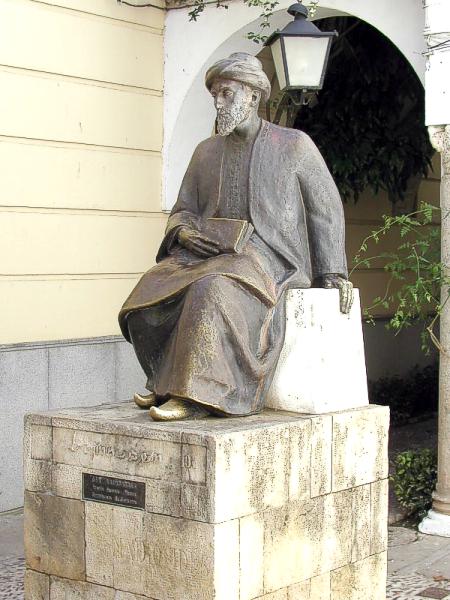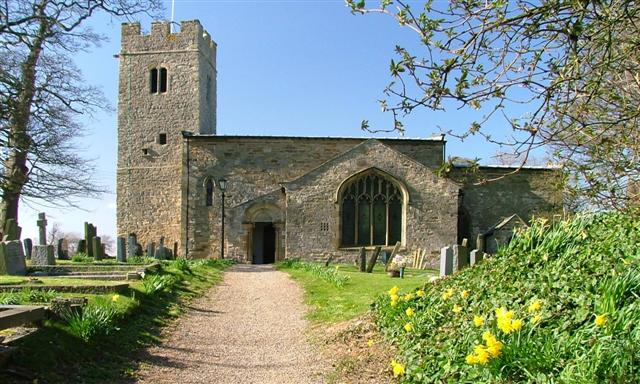The last Catholic bishop of Durham, Cuthbert Tunstall, liked to promote his family. Most of those men who can be identified as being in his service were related to him. Tunstall was born in 1474 at Hackfurth in Yorkshire, and his family correspondingly were also from the north-east as well as Lancashire.
After years in the south at the universities and working for the archbishop of Canterbury, and then as bishop of London from 1522 to 1530, Tunstall and his household, along with relatives, returned north in 1530 when he was appointed bishop of Durham. He would stay and build things here until his death in 1559, with the exception of a few years under house arrest in the 1550s. His nephews and cousins were his chaplains, his secretaries and above all else the recipients of the sort of patronage that a wealthy bishop had at his fingertips- rectories, masterships of hospitals, college fellowships and so forth. A few came to Durham Cathedral after 1539 as Tunstall’s appointees, others were involved with the cathedral in other ways, usually involving books.
His household really were fascinating, especially as they faced the choices of the Reformation. Tunstall was a scholar, who was close friends with Erasmus and Thomas More, and he expected his relatives to similarly be educated and engaged with the wider world of theology and classics.

He gave books to the cathedral library, including copies of his friends’ work, such as the two works by Guillaume Budé and a medical text by Matthew Sylvaticus. Tunstall may also have given more books than stayed at Durham. I’m slowly exploring the books that went elsewhere, which have Tunstall’s name in them to see if they ended up in the cathedral at some point. Some books are very securely attested, especially as the bishop himself gave books to friends or to Cambridge colleges. Others are much harder to unpick and may simply have been left behind in Durham or London when he was arrested in 1551 and then again in 1558, just before his death.
Tunstall’s relative and chaplain, Robert Ridley was widely admired as a theologian in the 1530s and helped with Polydore Vergil’s edition of the Romano-British writer Gildas, for example (sadly there’s not a contemporary copy in the library here). Ridley, who gave quite a few books to the monastery in 1534 hated Luther and what he saw as sloppy scholarship and heresy against the papacy, judging from his marginal notes, and from a letter that he wrote about Tyndale’s New Testament in 1527. One of his books that came to Durham was a tract against Luther, which was then of intense interest to Thomas Swalwell, suggesting that in Durham the monks were paying close attention to the religious changes in Germany and that Ridley knew his recipients when he decided to give the book away. Yet Ridley’s nephew was the evangelical bishop of London, Nicholas Ridley, who was burned at the stake in Mary’s reign. This is all the more surprising when you realise that Nicholas Ridley was really rather fond of his uncle, who had paid for his education.
In 1542 the first outsider to become a canon turned up. His name was John Crawford and although he was new to Durham, he was not new to the general area. He had been a Franciscan friar, university educated, and then based in Newcastle. He fitted in fairly easily into the ex-monastic community in the cathedral and became Tunstall’s chancellor. Crawford seems to have been committed to Durham because when he died in 1561 he left gifts to many of the canons, to the vicars and to the choristers as well as the grammar school students and lay clerks and asked to be buried by the Bolton altar in the south transept of the cathedral.

Most interestingly for my purposes, he left three sets of books to the common library- a set of St Augustine’s works, St Basil in Greek and what he called ‘Rabbye Moyses’, the Hebrew legal commentator, medical writer and astronomer Maimonides.There’s lots by St Basil and plenty of copies of Maimonides in the library today, but the earliest existing copies come from the seventeenth century, probably replacing Crawford’s gifts when they were no longer usable. The Augustine is still here though, and I’m looking forward to having a look at it next week. Another of Tunstall’s servants and friends, Walter Preston also had books that are now at Durham. Preston was never a canon of the cathedral (he died too young in 1533), but he was Tunstall’s chaplain and the rector of Redmarshall church in County Durham, as seen here, so would possibly have been drawn into the orbit of the church and its library through Tunstall himself. Again, I’m looking forward to having a chance to figure out how his books joined the collection.

What does this all have to do with Tunstall? Well, Tunstall is a frustrating figure; he survived the Reformation, he was conservative yet defended and protected Bernard Gilpin, who consistently expected martyrdom for his Protestant beliefs under Mary. Tunstall was a noted scholar, yet his intellectual response to the Reformation seems inconsistent and unclear. By looking at those around him and his own relationship with his cathedral community, I’m hoping that I can perhaps make some suggestions about how we should read what we know about him. And he’s a fun research subject!
If you’re interested, here’s a couple of works that have been written about these people recently:
- Mark A Loudon, ‘Cuthbert Tunstall, Humanist Bishop and Counsellor to Henry VIII: Education and Ecclesiastical Patronage in Tudor England,’ (University of Toronto PhD thesis, 2004).
- Margaret Harvey, ‘Reaction to Revival: Robert Ridley’s Critique of Erasmus,’ Studies in Church History 44 (2008): 77-86.
